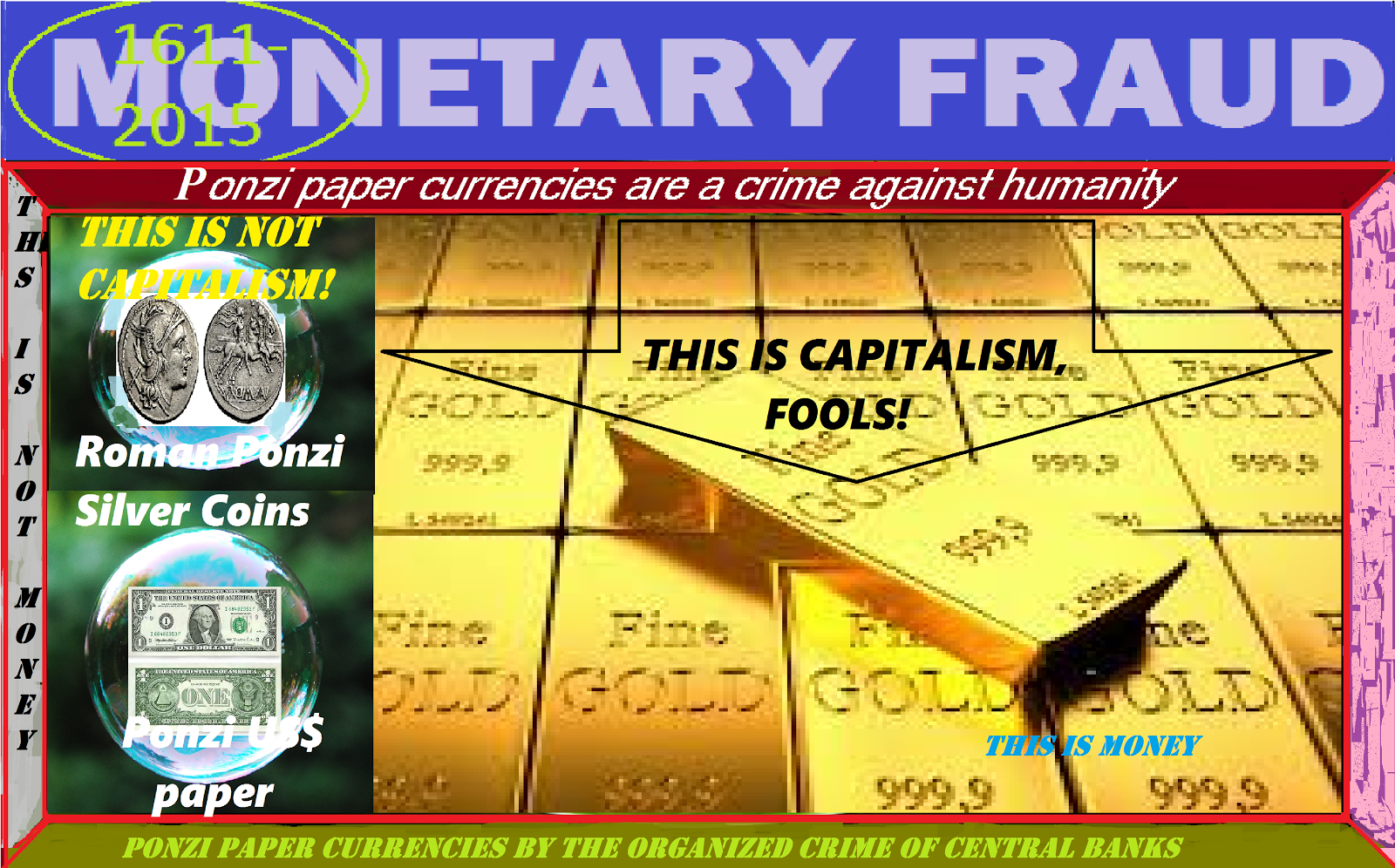

THE OVERTHROW OFWEIGHTS AND MEASURES IS CHAOS WEAPONIZED. 1. Bring and restore all mining under the People’s Treasury. 2. Bring all Human Energy (Labor) under the people’s Treasury. 3. Then issue overnight currency supply ballasted on current production, in accordance to the ancient law and root value of “Weights AND Measures.” 4. MINING, ballasted in Bonds, future production. 5. TAX-EXEMPTED CENTRAL BANKING SCHEME IS IMITATION CAPITALISM. 6.2022.7.26. RUSSIA/CHINA HEAD IN THIS DIRECTION!
Wednesday, October 30, 2019
QUARTER POINT RATE CUT BY THE FED THREATEN PONZI CURRENCIES AND BONDS IN OVER 200-COUNTRIES.

6,5 mil visualizaçõeshá 1 dia

6 mil visualizaçõeshá 1 dia


61 mil visualizaçõeshá 2 dias

10 mil visualizaçõeshá 3 semanas



14 mil visualizaçõeshá 1 mês

11 mil visualizaçõeshá 2 meses


ASSISTIR MAIS TARDE
3,6 mil visualizaçõeshá 1 semana
The Federal Reserve cut interest rates for the third consecutive t i me on Wednesday, but did not offer clues as to whether or not it will cut rates fu
The
The statement also notably removed language promising to “act as appropriate to sustain the expa nsion,” a phrase commonly used by Fed officials after it pivoted from the steady rate hikes of 2018 to the rate cuts in July and September.
The Fed now says it will “continu e to monitor implications of incoming information for the economic outlook” in considering future moves .
Two FOMC voters, Kansas City Fed President Esther George and Boston Fed President Eric Rosen gren, di ssented fro m t he deci sio n. Both dissented against the July and September decisions to cut rates as well.

View photos
DENVER, CO - OCTOBER 8: Fed Chairman Jerome Powell is giving a luncheon keynote at the National Association of Business Economists in Embassy Suites by Hilton Denver Downtown Convention Center. October 08, 2019. (Photo by Hyoung Chang/MediaNews Group/ The Denver Post via Getty Images)
Downside risks
The statement was otherwise mostly unchanged from September. The Fed continued to describe the labor market as “strong,” as the September jobs report saw the une mployment rate fall to 3.5%.
On inflation, the Bureau of Economic Analysis repo rted core personal consumption expenditures (the Fed’s preferred measure) of 1.8% in August. But the Fed statement not ed th at inflation c ont inues t o r un “below 2%.”
Hours before today announcement, the BEA also released its first print on third-quarter GDP, showing an annualized 1.9% pace of growth, above expectations of 1.6%. Consumption appeared to moderate, but heavy government spending helped boost U.S. growth.
The GDP figures also revealed a 15.3% decline in structures spending in the t hird quarter, just one example of the declining business fixed investment.

View photos
Federal Reserve Chairma n Jerome Powell (R) speaks with New York Fed President John Williams and Kansas City Fed President Esther George (L) at the Kansas City Fed’s annual Economic Symposium in Jackson Hole, Wyoming, U.S. Aug ust 24, 2018. REUTERS/Ann Saphir
But Fed policymakers have said in recent months that the rate cuts are mostly in reaction to what Fed Chairman Jerome Powell has described as “downside risks, ” suc h a s trade con cer ns and geo pol itical tension. Those risks, policymakers sa y, may not be seen in the data yet
.
Since the
Fed’s last meeting in September, dev elopments on those d ownside risks have been mixed.
The trade war between the U.S. and China could be on its first steps to resolution as both sides work through a “phase one” tra de de al, although the specif ic details of the agreement are still being hashed out.
Geopolitical tensions, meanwhile, do not appear to be letting up. Brexit was postponed yet again, protests continue in Hong Kong, and China’s economy appears to be slowing. Two weeks ago, the International Monetary Fund lowered its expectations for global growth in 2019 to the slowest pace since the financial crisi s, at 3%.
Not QE
In his press conference, Powell will be closely watched for any commentary on the Fed’s mid-October announcement that it would resume growth of its balance sheet by buying about $60 billion of Treasury bills each month. The purchases are designed to increase the amoun t of bank reserves in the financial system, since a scarcity of available bank reserves for overnight lending led to a dramatic spike in interest rates in September.
The F ed says the purchase s will continue at least into the second quarter of 202 0.
Subscribe to:
Posts (Atom)
